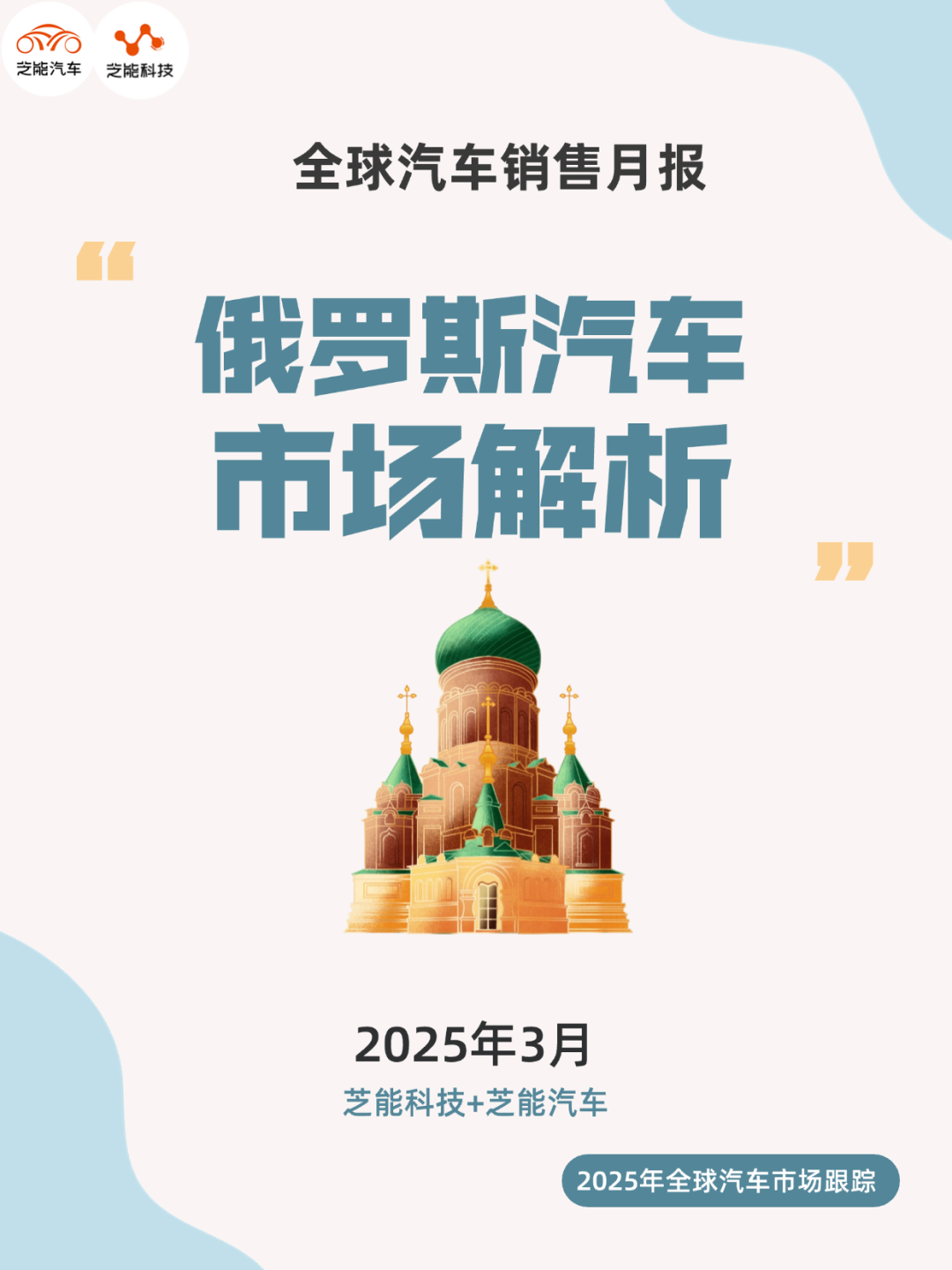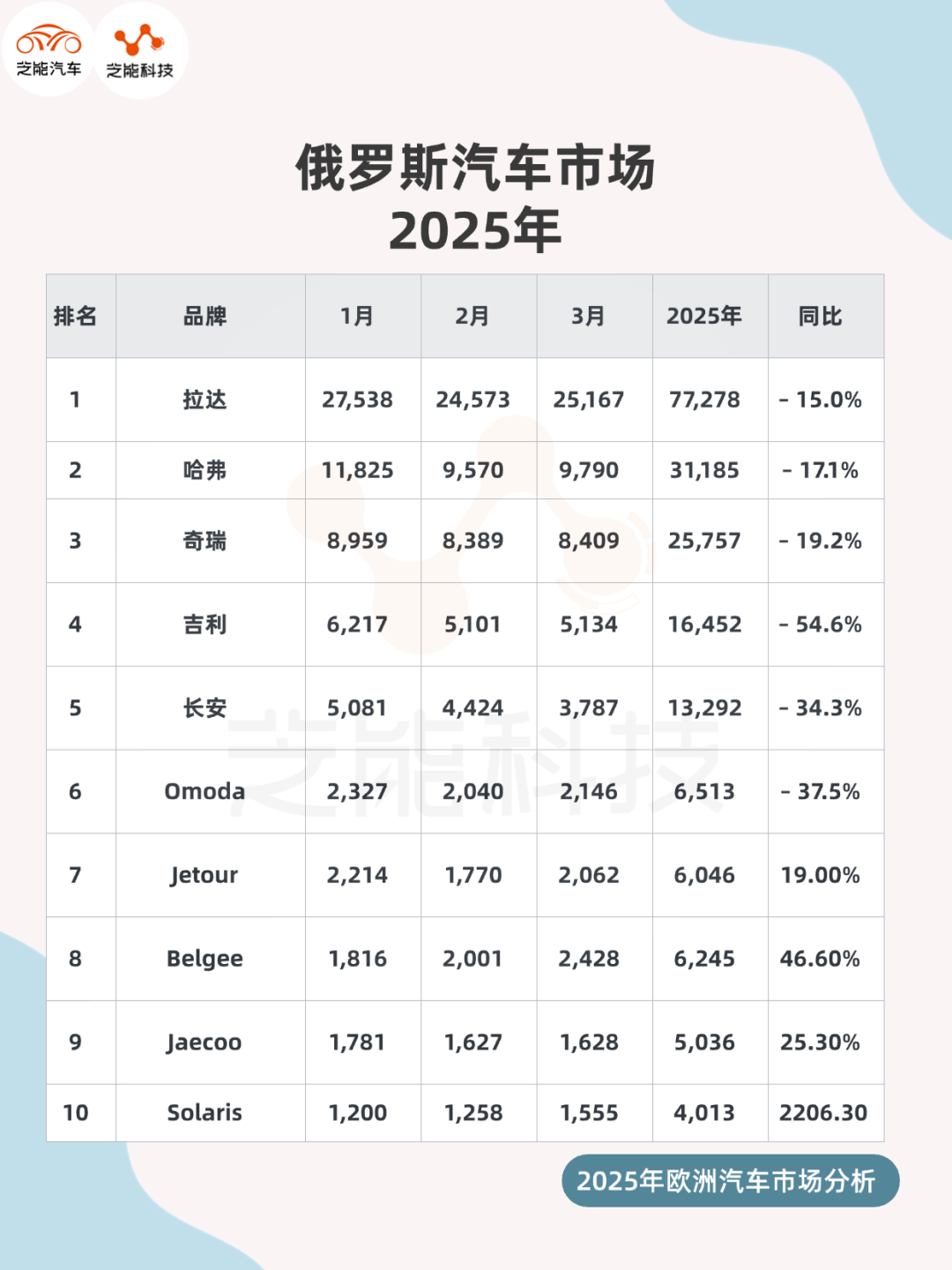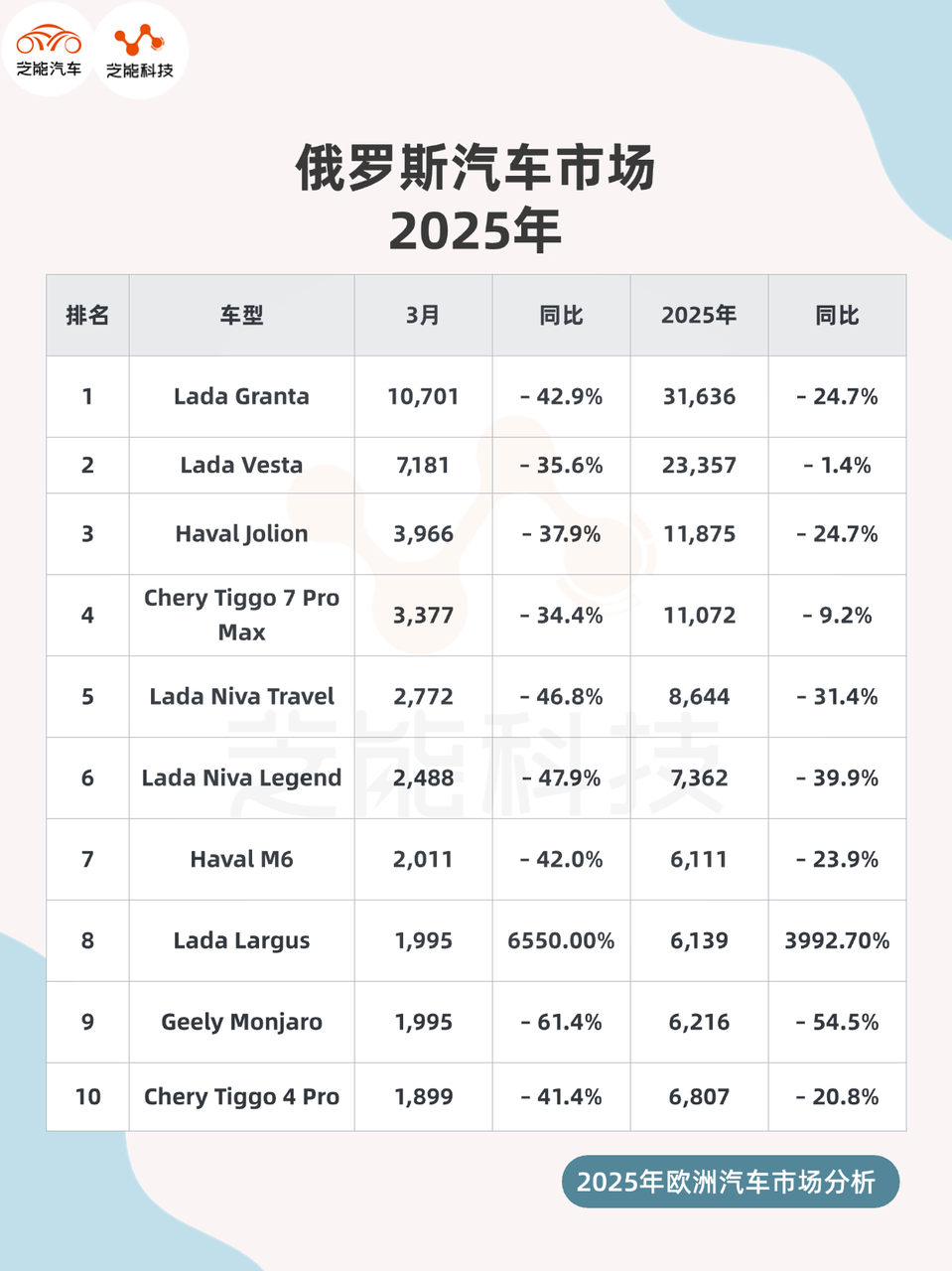European Auto Market | Russian Auto Sales in March 2025: A Staggering Drop of 45.5%
![]() 04/11 2025
04/11 2025
![]() 421
421

March 2025 witnessed a precipitous decline in the Russian new car market, with sales plummeting 45.5% year-on-year to a mere 79,822 units. Cumulative sales for the first quarter stood at 246,934 units, marking a 25.3% year-on-year decrease.
● Brand-wise, amidst the overall market downturn, the local brand Lada maintained its pole position, while Chinese brands Haval and Chery showed resilience, with Geely and Changan experiencing significant sales declines.
● Model-wise, Lada Granta and Vesta continued to lead, while Haval Jolion and Chery Tiggo 7 Pro Max exhibited stable performance, highlighting a competitive landscape dominated by a duel between local and Chinese brands.
01
March 2025 in Russia: Auto Sales Overview
● Sales in the Russian new car market reached 79,822 units in March 2025, down 45.5% year-on-year, marking a significant low in recent years.
● Cumulative sales for the first quarter amounted to 246,934 units, a 25.3% year-on-year decrease. The Russian market remains dominated by traditional fuel vehicles, with electric and hybrid vehicles holding a minimal share. The market downturn may be attributed to economic fluctuations, supply chain pressures, and waning consumer confidence.
● Brand Sales Rankings
◎ Lada topped the list with sales of 25,167 units, capturing a 31.5% market share, down 36.9% year-on-year. Its decline was lower than the market average, showcasing the resilience of local brands.
◎ Haval ranked second with sales of 9,790 units, accounting for a 12.3% market share, down 39% year-on-year, demonstrating relatively stable performance.
◎ Chery sold 8,409 units, representing a 10.5% market share, down 36.1% year-on-year, also exhibiting a certain degree of resilience.
◎ Geely and Changan performed poorly, with Geely selling 5,134 units, down 65.8% year-on-year, and its market share shrinking to 6.4%; Changan sold 3,787 units, down 59.4% year-on-year, with a market share of 4.7%. The significant declines of both may be linked to slower product update cycles or adjustments in market strategies.
◎ Belgee (a joint venture brand between Geely and Belarus) sold 2,428 units, down only 11.1% year-on-year, capturing a 3.0% market share, and rising to sixth place, outperforming the market average.
◎ Jetour and Jaecoo sold 2,062 and 1,628 units respectively, down 21.2% and 16.8% year-on-year, maintaining relative stability amidst the adverse market conditions.
◎ The new brand Solaris debuted in the top ten with sales of 1,555 units, up 793.7% year-on-year, showcasing its rapid rise potential.

● Chinese brands continued to shine in the Russian market, occupying seven of the top ten spots (Haval, Chery, Geely, Changan, Belgee, Jetour, Jaecoo).
◎ As leaders, Haval and Chery sold 9,790 and 8,409 units respectively, with a combined market share of 22.8%, maintaining strong competitiveness amidst the market downturn.
◎ Despite heavy blows to Geely and Changan, their cumulative sales still ranked among the top five.
◎ Emerging brands such as Belgee, Jetour, and Jaecoo demonstrated growth potential, with Belgee, in particular, defying the trend and emerging as a dark horse among Chinese brands.
With high cost-effectiveness and diversified product strategies, Chinese brands continue to occupy a pivotal position in the Russian market.
02
Analysis of Model Sales and Competitive Landscape
● Model Sales Rankings
◎ Lada Granta led the pack with sales of 10,701 units, capturing a 13.4% market share, down 42.9% year-on-year. Its decline was slightly lower than the market average, consolidating its status as a national favorite.
◎ Lada Vesta closely followed with sales of 7,181 units, accounting for a 9.0% market share, down 35.6% year-on-year, also showing robust performance.
◎ Haval Jolion sold 3,966 units, ranking third with a 5.0% market share, down 37.9% year-on-year. Its market share increased year-on-year, indicating that its popularity remained largely unaffected.
◎ Chery Tiggo 7 Pro Max ranked fourth with sales of 3,377 units, down 34.4% year-on-year, the smallest decline, demonstrating strong resilience.
◎ Lada Niva Travel and Niva Legend ranked fifth and sixth with sales of 2,772 and 2,488 units respectively, but both saw year-on-year declines exceeding 46%, signaling weak demand for off-road models.
◎ Haval M6 returned to the top ten with sales of 2,011 units, down 42% year-on-year, showing stable performance.
◎ Lada Largus sold 1,995 units, up 6550% year-on-year, benefiting from its re-launch.
◎ Geely Monjaro and Chery Tiggo 4 Pro ranked ninth and tenth with sales of 1,995 and 1,899 units respectively, but both witnessed significant year-on-year declines of 61.4% and 41.4%.

● The Russian auto market's competitive landscape presents a fierce duel between Lada and Chinese brands.
◎ Lada dominates with its economical models such as Granta and Vesta. Its localization advantages and low-price strategy enable it to maintain a high market share even during market downturns.
However, Chinese brands are gradually eroding market share through their diversified SUV product lines and high cost-effectiveness.
◎ As representatives of mid-to-high-end SUVs, Haval Jolion and Chery Tiggo 7 Pro Max have stable sales and relatively small declines, reflecting Russian consumers' preference for practical and cost-effective models.
◎ The decline of Geely Monjaro suggests that its premiumization strategy has encountered setbacks in the current market environment, while models such as Changan CS55 Plus failed to crack the top ten.
◎ The emergence of the new brand Solaris introduces new dynamics into the market. Its positioning, inspired by the Hyundai Creta, caters to Russian consumers' demand for compact SUVs and may pose a short-term threat to existing brands.
Overall, Lada maintains an absolute advantage in the low-end market, while Chinese brands continue to strive in the mid-to-high-end SUV segment. The competitive landscape remains dynamic amidst the market downturn.
Summary
In March 2025, amidst the severe situation of a 45.5% plunge in the Russian auto market, Lada firmly held onto its leading position, leveraging its local advantages. Haval and Chery showcased the competitiveness of Chinese brands with their stable sales and market shares, while the declines of Geely and Changan underscored the challenges in market adjustments.








